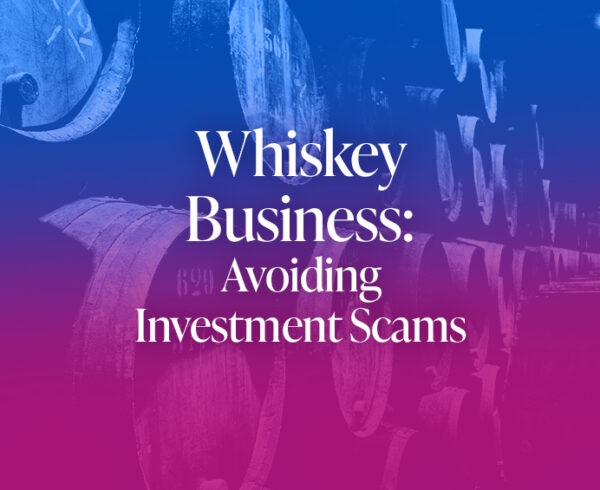With millions of buyers and sellers interacting daily on eBay, it’s no surprise that scams are becoming more common on the platform. 29% of eBay buyers surveyed reported experiencing a scam in the two years leading up to January 2024. As online shopping continues to grow, both buyers and sellers need to stay vigilant and recognise the signs of fraudulent activity.
In this article, we’ll break down 10 of the most common eBay scams and provide you with helpful tips on how to spot them.
What Are eBay Scams?
A scam refers to fraudulent activities designed to deceive buyers or sellers into giving away money, goods, or sensitive personal information. Scammers often exploit the trust buyers and sellers place on platforms like eBay, taking advantage of unsuspecting victims. These scams can range from fake listings and non-delivery of items to phishing attempts that target your data.
Being able to spot an eBay scam early can save you time, money, and frustration. Here are some of the most common types of eBay scams you should be aware of:
1. Phishing eBay Scam
Phishing scams are among the most common online scams. In a phishing eBay scam, the scammer impersonates eBay in an attempt to steal sensitive information such as login credentials, credit card details, or personal identification information.
How It Works:
The attacker might send you a fake email or message that appears to come from eBay, asking you to confirm a purchase, reset your password, or verify your payment details. These messages often contain links to fake websites designed to look like eBay’s official site.
How to Spot It:
- Look out for unusual email addresses (e.g., ebay_support123@gmail.com).
- Avoid clicking on links in unsolicited messages. Instead, go to the official eBay website to verify any information.
2. Broken Item Scam
The broken item scam happens when a buyer purchases an item only to receive it in a damaged condition, or with parts missing. The buyer then claims a refund or asks for a partial refund to resolve the issue, sometimes returning the item in even worse condition.
How It Works:
After receiving the item, the scammer contacts you with complaints about the item’s condition, often asking for a refund or demanding to return the item for full reimbursement. In some cases, the scammer may even send back a completely different, cheaper item.
How to Spot It:
- Always take photos of the item before shipping it.
- Use tracked delivery services to ensure the item is delivered properly.
3. Chargeback Scam
Chargeback fraud, also known as friendly fraud is when a buyer makes a legitimate purchase and receives the item, but later contacts their credit card provider or bank to dispute the charge, claiming they didn’t receive the item or that it wasn’t as described. The buyer ends up getting their money back while the seller is left without the item and the payment.
How It Works:
After receiving the product, the buyer files a chargeback claim with their bank or credit card company, stating that the charge was fraudulent or that the product was not received.
How to Spot It:
- Keep records of shipping and delivery.
- Offer tracking and insurance for high-value items.
4. Non-Delivery Scam
The non-delivery scam occurs when a seller receives payment for an item but fails to ship it to the buyer. The seller might provide fake tracking information or simply ignore the buyer’s inquiries.
How It Works:
The buyer pays for the item, but it never arrives. The seller may claim delays or provide false tracking numbers, ultimately keeping the buyer’s money.
How to Spot It:
- Always check seller feedback before purchasing from a new seller.
- Look for suspiciously low prices for valuable items.
5. Gift Card Scam
In a gift card scam, the scammer convinces the buyer to pay for an item or service with gift cards, rather than using standard payment methods. Once the buyer sends the gift card information, the scammer disappears with the money.
How It Works:
The scammer contacts you offering a deal, asking for payment via gift cards. Once the payment is made, the scammer usually disappears, and you’re left with nothing.
How to Spot It:
- Legitimate sellers will never ask for payment via gift cards.
- Be cautious if the seller is pressuring you to pay quickly.
6. Overpayment Scam
In the overpayment scam, the buyer overpays for an item – often via cheque – and asks the seller to refund the excess amount. The buyer might claim it was an accident, but in reality, they have no interest in honouring the payment. The seller refunds the scammer and ends up losing both the product and the original payment.
How It Works:
The scammer sends a payment for an amount higher than the agreed price and then asks the seller to send the excess funds back. Often, the initial payment either bounces or is recalled, leaving the victim out of pocket twice, with no item to show for it.
How to Spot It:
- Double-check the payment amount before sending an item.
- Only refund amounts after confirming payment has cleared.
7. Third-Party Payment Scam
A Third-Party Payment Scam occurs when a fraudster convinces a buyer or seller to use a payment method outside of a trusted platform, such as eBay, Amazon, or PayPal. By directing the transaction to an unprotected or unofficial payment service, the scammer is making sure there is little to no recourse for the victim if the transaction goes wrong.
These scams typically involve the scammer persuading their target to use wire transfers, prepaid cards, cryptocurrency, or other untraceable payment methods that bypass the platform’s buyer or seller protections.
This scam involves a third party claiming to be a friend or family member of the buyer. They ask the seller to ship the item to a different (often to an international) address, where the scammer can then resell the product.
How It Works:
The scammer uses someone else’s account to make a purchase and directs the seller to ship to an address other than the buyer’s.
How to Spot It:
- Be cautious if an eBay buyer requests you to ship to an address different from their registered address.
- If something seems suspicious, contact eBay for guidance.
8. Triangulation Scam
Triangulation scams involve the scammer listing products at a lower price on eBay, buying them using stolen credit card details, and then reselling the goods at a higher price to unsuspecting buyers.
How It Works:
The scammer buys products using stolen or fake payment methods and then sells the same products to another buyer for a higher price.
How to Spot It:
- Check the seller’s feedback and verify if their items are priced too low compared to similar products.
9. Fake Customer Service Scam
In this scam, fraudsters pose as eBay customer service representatives and attempt to steal sensitive personal information. They might claim your account is at risk or offer “help” for a refund.
How It Works:
The scammer sends an email or message, impersonating eBay, asking you to provide personal or payment details to resolve an issue with your account.
How to Spot It:
- Contact eBay directly through their official support page rather than responding to unsolicited messages.
- Be cautious of unsolicited phone calls claiming to be from eBay.
10. Photo-Only Scam
The photo-only scam occurs when a seller lists an item using stock photos or photos that don’t accurately represent the item for sale. After purchasing, the buyer receives a completely different or inferior item.
A well-known example of this scam involved fraudsters listing PlayStation consoles for sale during a period when they were out of stock for months. Scammers would create eBay listings with titles like “PlayStation Console Photo” or subtly hide disclaimers in the item description, stating “This listing is for a photo of the console, not the actual console.” While technically not false advertising, these sellers deliberately misled buyers through deceptive and predatory tactics.
How It Works:
The seller uses misleading photos of the product, but once purchased, the buyer receives something entirely different.
How to Spot It:
- Examine item descriptions closely.
- Always ask for additional photos if the listing seems suspicious.
How Do I Protect Myself Against eBay Scams?
Here are a few tips on how to protect yourself from becoming a victim of eBay scams:
Check Seller Feedback: Always check the seller’s feedback rating before buying. Positive reviews from previous buyers can give you confidence that the seller is reputable.
Use Secure Payment Methods: Stick to eBay-approved payment methods, such as PayPal, and avoid paying via gift cards or other unconventional methods.
Stay Alert to Suspicious Offers: If an offer seems too good to be true, it probably is. Be cautious of deals that offer products at unusually low prices.
Verify Communication: Only communicate with sellers through eBay’s official messaging system. Avoid external email communications that might be phishing attempts.
Pay via eBay: Always pay using one of eBay’s approved payment methods. Never move to a different payment or chat platform and avoid paying in person.
Can I Get My Scammed Money Back?
In some cases, victims of eBay scams may be able to recover their funds. eBay offers Buyer Protection to help buyers who have paid for items that they didn’t receive or that are significantly different from the listing. However, recovery isn’t always guaranteed, and it’s important to act quickly.
You can also try contacting your payment provider, such as PayPal or your bank.
Have You Been Scammed?
If you’ve been a victim of an eBay scam and haven’t been able to recover your money, CEL Solicitors may be able to help. Our team has successfully assisted numerous clients in reclaiming lost funds. We provide expert legal advice and can help you pursue a claim if your eBay scam case involves negligence or a lack of protection.
Contact us today to learn more about how we can assist you in reclaiming your funds and protecting your financial future.













